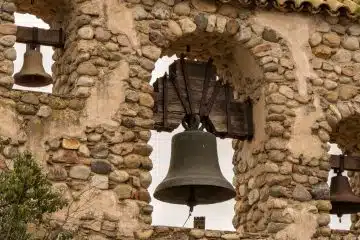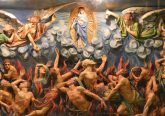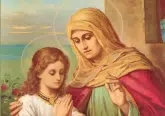Other Gospels
![]()
Is it true that the Church destroyed other gospels besides the four Gospels?
In the early Christian world, there were many writings about Jesus and the apostles—not just the four canonical Gospels and other writings that became part of the New Testament. Additional related writings from this time that the Church determined were not divinely inspired are known as apocrypha, meaning “hidden books.” These works, even if interesting or spiritually useful, were not ordinarily among the writings proclaimed in the Christian churches, but that does not mean that members of the Church intentionally sought to destroy them.
INSPIRED AND UNINSPIRED
The early Christian communities accepted the New Testament’s 27 books as authoritative based on their origin in the apostolic era (no later than the first century), correct teaching and use in liturgical worship. These texts included the four Gospels and the writings of Paul, James, Peter and John. Other writings lacked at least one of the three criteria and were therefore not viewed as divinely inspired or authoritative.
Some writings in circulation offered alternative narratives and teachings regarding Jesus and the apostles. Many of these post-dated the inspired writings (sometimes by hundreds of years) but claimed apostolic origin and falsely took titles such as the Gospels of Mary, Thomas and Judas.
CANON FORMATION
Discerning which early writings were inspired—and therefore part of the Bible—lasted until the fourth century, but by the late second century, a consensus was forming. A list from this time shows all of the eventual New Testament books except Hebrews, James and 2 Peter. Some Church Fathers included a document called the “Shepherd of Hermas” among those thought to be inspired, but it was eventually removed from the canon (the approved list of inspired writings).
Eventually, through the discernment of bishops, especially the Synod of Hippo (393) and the Council of Carthage (397), the New Testament’s list of 27 books was codified. St. Athanasius wrote in the fourth century that these books were “fountains of salvation, that they who thirst may be satisfied with the living words they contain.” “In these alone,” he wrote, “is proclaimed the doctrine of godliness. Let no man add to these, neither let him take from these” (“39th Festal Letter”).
APOCRYPHA
The non-inspired writings became known as the apocrypha (not to be confused with the seven books of the Old Testament that Catholics consider inspired but which Protestants label “apocrypha”). These early Christian texts include the “Didache,” “the Letter of Barnabas” and the “Shepherd of Hermas” that were popular among believers and occasionally read as part of worship but were ultimately deemed uninspired.
Other writings, including the Gospels of Peter, Thomas, Judas and Mary Magdalene, were never considered revelation because they were written long after the inspired texts, usually in the mid-second century or later. They also contain significant variations from the New Testament books, such as in the Gospel of Thomas, where Jesus says of Mary Magdalene that “women are not worthy of life” and she must “make herself male” to enter heaven. Even in the early Church, they were considered spurious and inconsistent with revelation.
While some non-canonical texts were considered errant and faced opposition from Christian leaders, the Church did not systematically destroy alternative gospels. These texts survive in manuscripts from the ancient world, though even the early believers understood that these could not be accepted as inspired. These other gospels and writings can make for fascinating reading, but they are not God’s revelation.
 Father David Endres is professor of Church history and historical theology at Mount St. Mary’s Seminary & School of Theology.
Father David Endres is professor of Church history and historical theology at Mount St. Mary’s Seminary & School of Theology.
This article appeared in the September 2024 edition of The Catholic Telegraph Magazine. For your complimentary subscription, click here.













